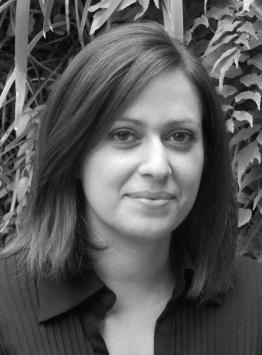
In health policy we have been talking about ‘moving care closer to home’ for a long time. Although I understand the logical argument for this, I must admit that I have never had any exposure to community services. I also found it difficult to understand who did what in the community –what are the differences between a health visitor, a community matron, a district nurse? Before my connecting experience, the most I knew about community services was from what I had watched on the television series, ‘Call the midwife’.
So when the opportunity to go connecting came about, I was keen on shadowing professionals in the community to get a better understanding of their work and the challenges they face. The Connecting team at DH arranged a four day placement for me at Central London Community Healthcare NHS Trust visiting; a nursing team in a homeless charity, a walk- in centre, shadowing a community matron in Notting Hill, a palliative care centre, and a nursing home with a specialist dementia ward.
The trust covers four London boroughs encompassing a very diverse population. It has over 400 sites and employs about 3,000 professionals covering 66 different service lines.
My connecting highlights
Homeless people are a transient population and the nurses at ‘The Passage’ try to provide a service to anyone who seeks it. They have an integrated electronic patient record of everyone they see which is linked to the local GP - this ensures they don’t duplicate prescriptions. They also record as much information about an individual as they can -this ensures some continuity in the care they receive.
The nurse led walk- in centre in Soho struck me as being a very efficient service. They triaged patients, assessed their needs, prescribed where necessary and referred to other services if required. The staff very good at giving people clear information and were also very reassuring. Each nurse saw about four patients per hour, and there were five nurses on duty (there should be seven). The patients they saw had various ailments and were there rather than anywhere else as it was easy to access (people had complained about access to primary care).
On day three of my connecting experience, I shadowed a community matron. We spent the day walking from one patient to the next around the streets of Notting Hill. We went from a council block apartment to a mansion block apartment overlooking a tree- lined square – the setting may have been different from one place to the next but the patients’ needs were similar; they were frail, had multiple chronic conditions and were often lonely. The nurse was flexible in his approach, listened to his patients and was very attentive to their surroundings.
On my final day I visited a Princess Louise Palliative Care centre, a place which felt so calm and serene. It felt cosy and the patients seemed content planting seeds together, even though many of them were towards the end of their life. In the policy world, we talk about people being able to die at home rather than in hospital, but what had not occurred to me before is that people change their minds and places like this serve a very noble purpose.
We also visited a nursing home with a dementia ward. The organisation had just finished renovating parts of the building to be more dementia friendly. This was funded by DH so it was great to see what they had done with the money and how the patients were benefiting from their new sensory environment.
So, what will I take away from connecting?
My take home messages, which I will consider when thinking about the future delivery of health and care services, are:
- Moving care closer to home may be what some patients want but this isn’t for everyone.
- The logistics of organising community care are complex. A closer alignment with primary and social care would enable better case management and a more efficient way of delivering care.
- The workforce is an ageing one, and we must raise the profile of this profession as their contribution to the community is invaluable.
- Use of technology should be encouraged as it may release some of the administrative burden and allow more time to care for their patients
Finally, I would like to thank the Department for giving me an opportunity to shadow healthcare professionals and speak to patients. It is an experience which has fuelled my thinking and would recommend it to others.